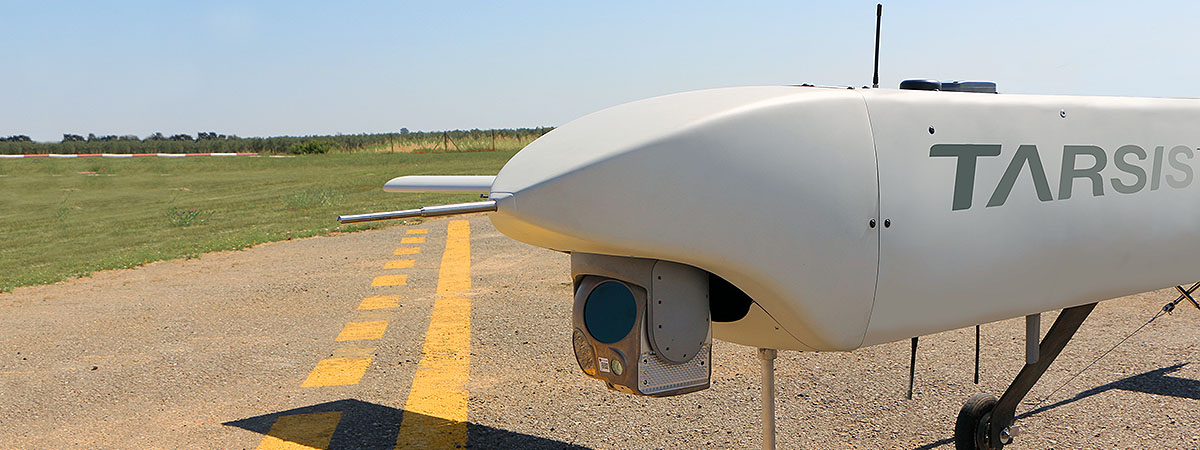The TARSIS 75 UAS produced by AERTEC, the international technology company specialized in aeronautics and defence, has just carried out a flight campaign at the facilities of the El Arenosillo Experimentation Centre (CEDEA) for the Spanish Ministry of Defence. This is the first time in Europe that a laser designator that complies with the STANAG 3733 standard has been integrated into a Class I unmanned system.
AERTEC’s TARSIS 75 UAS has therefore increased its performance capabilities for the markets in which it operates: Spain, Latin America, Middle East and Asia.
The system is gyro-stabilised and incorporates pulsed laser designator capability, in addition to ISR capabilities based on electro-optical and mid-band infrared sensors to locate and identify targets at long range, both in day and night-time operations. Currently no other UAS operator or manufacturer in Europe has successfully integrated a STANAG 3733 compliant laser designator into a Class I unmanned system.
This new capability will be very useful for artillery fire support missions where laser guided weapons are used and is in addition to the artillery fire correction capability already implemented in the TARSIS 75. In addition, AERTEC is developing in parallel guided weaponry for UAS, which will complement the designator capability and provide full strike capabilities.
TARSIS continues to be a category leader in ISR (Intelligence, Surveillance and Reconnaissance) capabilities related to the protection of the Armed Forces, both for fixed installations and convoy escort. Thanks to this new technological milestone achieved by the TARSIS 75, Class I tactical unmanned systems can now also enter the scenario of this type of operations.
This campaign has been carried out within the framework of the RAPAZ Programme promoted by the Ministry of Defence’s Directorate-General of Weapons and Materials (DGAM – Dirección General de Armamento y Materiales).


